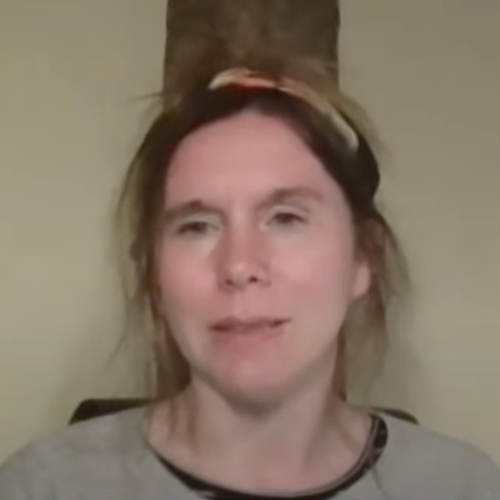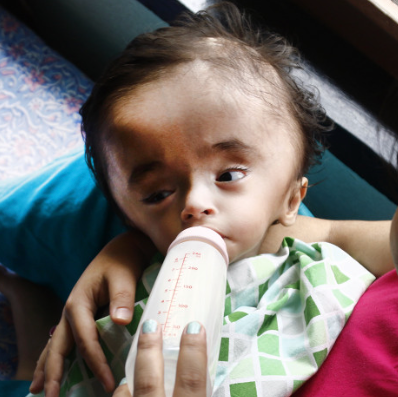My name is Brenda Ludens. I have been employed as a Respiratory Therapist for 23 years at a hospital in Sioux Falls, SD. My Mother, Norma Reiners, was a resident of a rehab unit in Sioux Falls from Aug. 27 to Oct. 13, 2014. At that point she was just four days from a scheduled return to her home following rehabilitation for a broken ankle.
My mother celebrated her 85th birthday on May 23, 2014. She was not your average 85-year-old. When I would call her at 6 a.m., she typically had already walked two miles on the treadmill, read her devotions and probably a couple chapters of her current novel, and had a batch of homemade bread rising. She was the 85-year-old who drove her friends to church activities, hair appointments, and whatever else they needed. She was politically active, continually fighting for the rights of women and children, particularly those who were abused and neglected. As part of her 85th birthday present, I asked her if there was anything she wanted to do that she hadn’t. She said, “I’ve always wanted to see an opera.” My sister and I planned a fun weekend to Chicago, IL in late September with opera included. Sadly, that trip never happened.
My beautiful mother, my best friend, and my personal hero passed away Oct. 15, 2014, from sepsis. Coincidentally, this was also the day of my daughter’s 33rd birthday. Prior to Mother’s death, my family and I only had a vague awareness of sepsis. Since her passing, we have learned just how quickly it can act and how very deadly it can be. This is my story.
On August 24, 2014, at 2 a.m., Mother called me and said, “I think I broke my ankle.” We proceeded to the ER and surgery was required to repair the fractures. Approximately 14 hours later, surgery was attempted, but due to fracture blisters and swelling, surgery could not be done and an external fixator was placed. She could not bear weight on that leg, and would be wheelchair-bound and unable to care for herself. It was recommended she go to a skilled nursing facility for rehab and preparation for surgery. The facility was our first choice and we were thankful a bed was available. She approached her placement there with a good attitude and was ready to do the work required to return to her own home. Unfortunately, the fracture blisters were not healing and surgery was continually postponed. After seven weeks, she was still at the facility but eagerly anticipating a return to her home. She was looking forward to an appointment with the orthopedic surgeon on Oct. 13 to remove the fixator and apply a cast.
On Oct. 9, therapists took her on a home visit to see if she could manage life at home. In my mind, I thought the home visit should not have been done while she had the external fixator on (increasing her risk for injury). But I thought, “They’re professionals. They must know what they’re doing. Not to worry.” The day went well, but that evening she developed exceptional pain in her leg and ankle. Prior to this point, she amazingly had not had any pain at all.
When my daughter visited her the next day on the 10th at suppertime she was in bed, which was very unusual for her. Typically she would be in the dining room enjoying her meal and visiting with residents. Up to this point, she had been doing everything for herself. Getting in and out of bed, down to therapy, to and from the dining room, on and off the stool. She did it all from a wheelchair with a heavy device on her leg but she did it on her own. Now she was nauseous, weak, and there was drainage from the pin sites of the fixator.
After her death, I obtained her medical records. Throughout the weekend there were several references to nausea, emesis, drainage from the pin sites, increased pulse and temperature, all signs and symptoms of sepsis.
On Saturday, Oct. 11, I spent the whole day with her. I was worried. Her condition had clearly changed. I visited with the physical therapist on duty. I was concerned that maybe something had been damaged during the home visit. In his opinion, he didn’t think that was possible but suggested I have the RN call the orthopedic surgeon to alert him of her change in status. I did that, and later that day she said the call had not been returned. I’m thinking, “The RN does not seem overly concerned about this, maybe I’m over-reacting.” The next morning, when I arrived early, the RN told me she placed another call to the orthopedic surgeon because of my Mom’s persistent increased temp. Later that day, she told me the PA returned the call and said because my mother had an appointment the next morning at 8 a.m. we should just wait and have her evaluated then. I’m okay with that because I think these medical professionals don’t seem to think this is an emergent situation, so again, not to worry. I have to say, I was somewhat comforted by that.
The next morning, October 13, I picked her up at 7 a.m. Clearly, her condition had not improved and in my opinion had only gotten worse. But I thought, “Now we’re going to the Dr. Finally we’ll get to the bottom of this.” I told her, “Mom, they will probably admit you to the hospital. I think we should be prepared for that.” Well, if only that had happened. When I told the orthopedic surgeon how her condition had changed, how concerned I was, and that I thought she should have an IV and be admitted to the hospital, he jokingly said, “Do you think it’s EBOLA?” I couldn’t believe it! By this time I’m thinking I’m in the Twilight Zone. There just aren’t words to express how I felt at that moment. I’ve been surrounded by medical professionals for seven weeks and this is what I get a joke about EBOLA?
Anyway, after the fixator was removed, a cast was applied and we were free to go, I asked one more time what we should do about her present condition (she even threw up in the doctor’s office), the orthopedic surgeon replied, “It’s probably a flu bug, but you MIGHT want to call her primary care physician.” In his defense, he ordered an oral antibiotic (which she likely would not receive until much later and probably wouldn’t have been able to keep down due to nausea and emesis.) Again, I’m thinking, “He’s the Dr. If he thinks this is not a big concern it must not be.” Again, I’m comforted by this. I think I’m just overly concerned because I love her.
In my gut, I knew something was wrong. I wish I had trusted that gut feeling. I wish I had screamed and yelled for someone to take me seriously. I wish I had taken her to ER then. Sadly, I placed all my trust in the medical professionals caring for her. So back to the nursing home we go.
Immediately upon our return I ask the RN to call her PCP. Of course, you know how these things go. You place the call, you wait to have the call returned, you get orders, it takes forever to get the orders implemented. By that afternoon, labs had been drawn, the RN attempted to get a urine sample, but was unable to do so, and my mother was confused and complaining of chest pressure. We were waiting for a call back from the PCP. I was beside myself with worry and I called my brother to relieve me, which he did immediately. I ran home quick to splash water on my face and calm down. I’m thinking, “I’m going CRAZY! My Mother is SICK and NOBODY CARES!!!” About that time, the phone rings and it’s the RN telling me the Dr. called back and my Mom should be taken to the ER for evaluation. FINALLY, someone is listening to me. I say, “So do you call an ambulance?” She says, “Oh no, you have to take her.”
Keep in mind, my brother is right in her room and I’m 15 miles away. I go back, we load her in the car and take her to ER. Looking back, I wish I would have stood right at the desk and called 911! Sadly, by this point it probably wouldn’t have made any difference. It was too late.
Well, you’ve probably guessed the end of the story by now. By the time we got to the ER my wonderful mother was practically unresponsive. She had suffered a heart attack, and had a raging urinary tract infection. She was transferred to the ICU and over the next 48 hours the family gathered at her bedside. My mother had very explicit directions regarding her end of life issues. When it became apparent that intubation and mechanical ventilation were necessary to keep her alive, we had to make a decision. About 8 p.m. on October 15 we made the transition to comfort care and we lost her at 11:30 that night. Cause of death: SEPSIS.
According to the Centers for Disease Control, and Prevention and Sepsis Alliance, more than 258,000 people die from sepsis each year in the U.S. It is the third leading cause of death after heart disease and cancer and is the #1 cost of hospitalization in the U.S. My mother was at especially high risk: she was elderly, she had open wounds, and she had an invasive device on her leg. Signs and symptoms of sepsis were present throughout the entire weekend prior to her death: fever, increased heart rate, pain, confusion, nausea, and vomiting.
We have learned that early detection and treatment are the key to recovery. My family and I believe that had her condition been taken more seriously and treated appropriately, her outcome could have been very different. Looking back, I blame myself, but in my defense, I entrusted her care to medical professionals. I kept thinking, “If they think she’s okay she must be.” Unfortunately, my family and I feel the medical community let us down. We intend to tell this story to anyone who will listen, we intend to speak loudly and often about SEPSIS, in hopes that no other family will have to suffer such a loss as ours.







